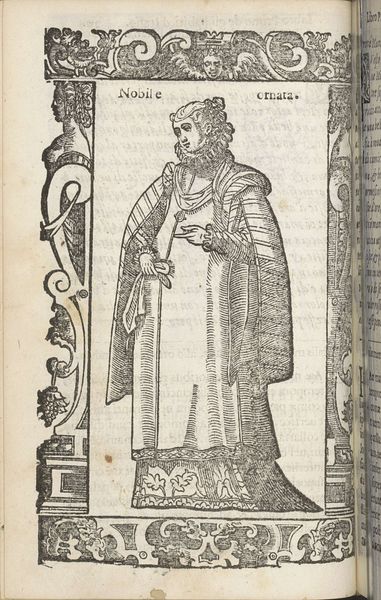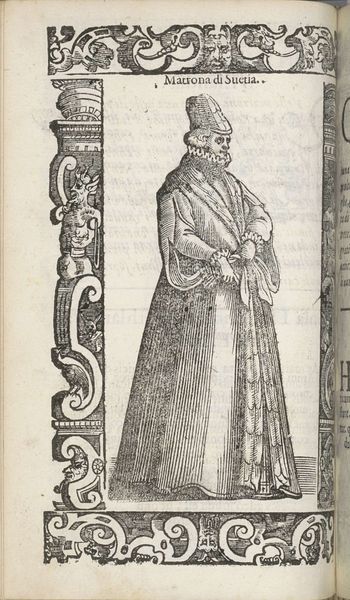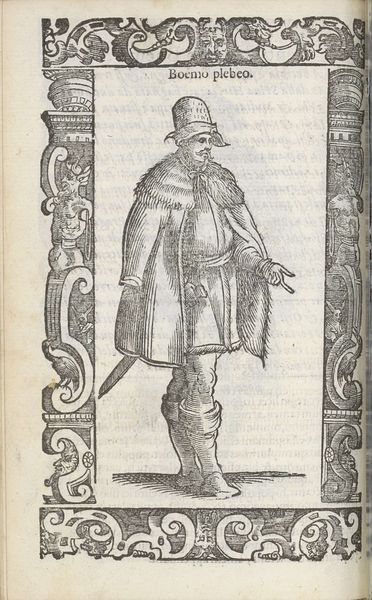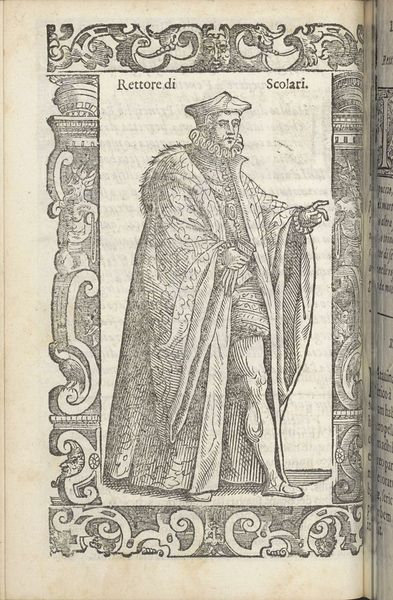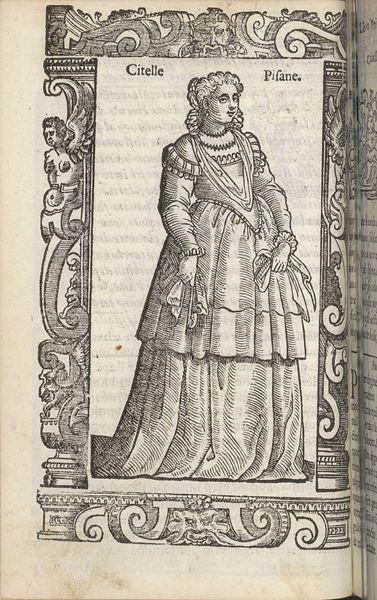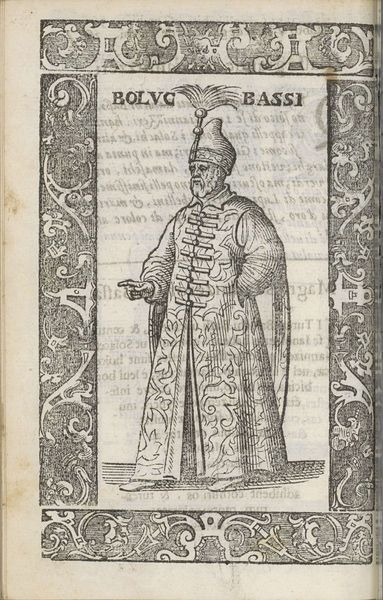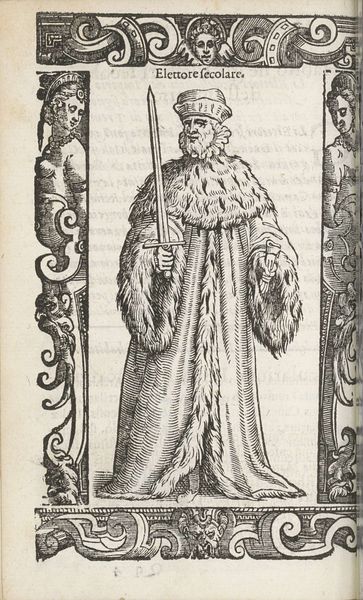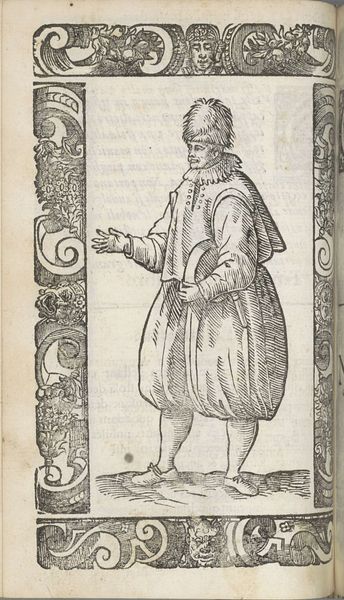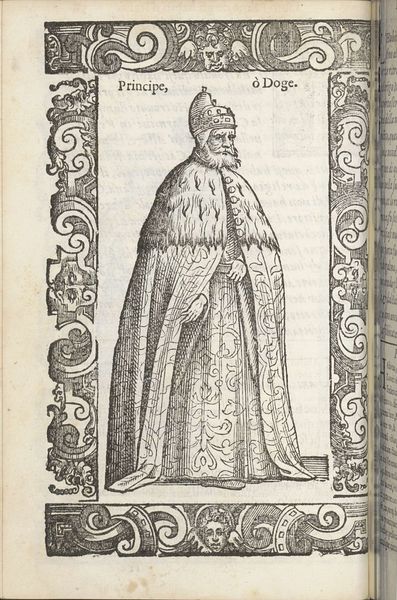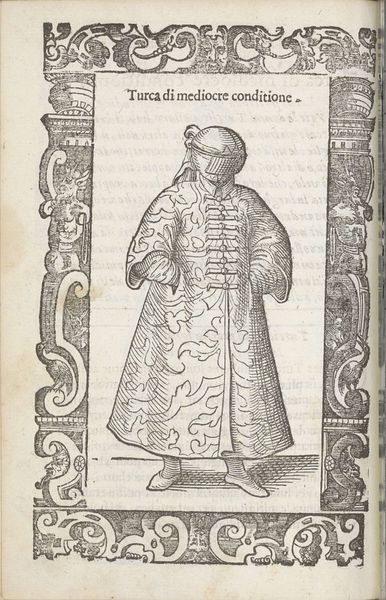
print, engraving
#
portrait
#
medieval
# print
#
mannerism
#
engraving
Dimensions: height 167 mm, width 125 mm
Copyright: Rijks Museum: Open Domain
Curator: Ah, what a stern fellow. The texture makes me want to reach out and see how stiff his ruff is. Editor: Indeed. What you’re responding to is Christoph Krieger's 1598 engraving, "Elettore Ecclesiastico," meaning “Ecclesiastical Elector”. It's a portrait, and the material, engraving on print, suits its graphic quality. I see someone deeply entrenched in societal structures, though perhaps clinging to them too tightly. Curator: An engraving suits that! There's such an inflexibility inherent in the medium. Like a fixed idea made manifest. Look at how he clutches what appears to be a small hammer in one hand and the good book in the other! What’s he planning to do, bludgeon enlightenment into everyone? Editor: Perhaps. The hammer and book reflect his dual authority – temporal power as symbolized by the hammer, and spiritual guidance, or rather, control, through scripture. His fur-trimmed robes speak volumes about wealth and status, marking him as someone invested in maintaining the social hierarchy of the late medieval era, a time when the church was inseparable from politics. The border, full of strange creatures, lends an unsettling element to the image. Curator: I'd almost call it Mannerist, given those odd ornamental flourishes – which makes me consider, who gets to decide that an image even warrants preservation, who gets to choose what symbols and portraits are printed? Editor: Exactly. These were turbulent times marked by theological disputes. Remember, print democratized information, but it was still carefully curated, shaped to bolster existing powers and suppress dissent. Who commissioned this print? For what purpose? Was it to legitimize the elector’s rule or to simply document it? These are all pertinent questions when analyzing this portrait. Curator: The sheer black and white quality, stripped of color, creates such stark authority! It mirrors the black and white moral pronouncements of the time, no room for nuance or color or shade. I see what seems to be grapes, which are lovely. And look! It could almost be one of those funny characters on tarot cards. It makes you think of those playing cards that can define fates and foretell the future. Editor: Precisely. The composition serves as a tool of ideological construction, a way to project authority and cement power relations within a deeply unequal society. A far cry from our own supposed egalitarianism. But it is something to keep in mind when evaluating the legacy of portraiture and how we, too, are persuaded and propagandized in this new media ecology. Curator: Well, I know one thing, I certainly wouldn’t want to meet him down a dark alley! I shudder to imagine which edicts he was imposing that day in 1598, hammer in hand and scripture in the other! Editor: Nor I. An excellent summation of the weight such images can carry, even now, centuries removed. Thank you for helping unpack this.
Comments
No comments
Be the first to comment and join the conversation on the ultimate creative platform.

